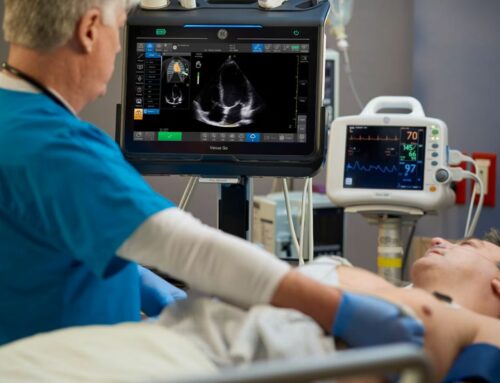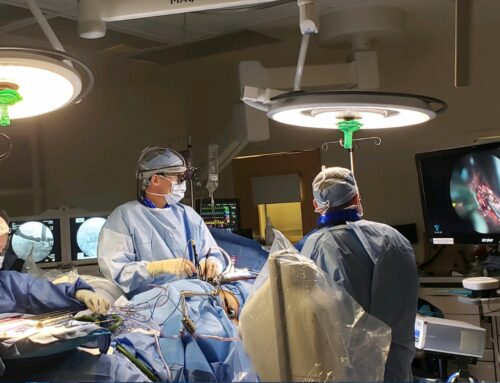By KYLE HENSON
This is a question that several years ago was philosophical and interesting but not terribly relevant. Today, as the landscape is changing the answer, is vital to your overall success. Like all good questions, the answer is….. It Depends!
Let’s begin by defining what we mean by VNA First? It simply means in your environment after images are acquired, are they stored to a PACS, presumably for interpretation, and then archived to the VNA for storage, or are they sent to the VNA and then routed elsewhere. As one might expect, there are pros and cons to each strategy, and the determination relates to how each is used. I hesitate to use the term workflow, because it, like “train the trainer” is one of the overused terms in the industry.
A PACS first orientation is the classical approach to radiology. A technologist acquires a study at a modality and then reviews the study and demographics on a PACS workstation. The tech may perform some level of image manipulation such as window leveling, deleting of images, and general image QA. Often times additional information is added in the form of scanned documents which can be anything from the insurance card to technologist notes or worksheets. Finally, the exam is marked as ready to be viewed by the physician or radiologist. When the study is interpreted and a report created the study is marked complete or reported. At some point in this flow, the study is put into the archive queue by PACS (when it reaches a certain status) and it is sent on to the VNA. In this process, the VNA is acting primarily as the archive, and in some cases, is called the deep archive or cold archive. If the study is ever needed again for comparison and it is not in local storage, PACS will be retrieved.
A VNA first orientation is a different flow. After the images are acquired, they are sent to a technologist imaging system where QA and image manipulation occurs. This can occur on a department-based system like PACS, a dedicated QC workstation, a web-based viewer, or on the VNA itself. If not already present, the study is then sent to the VNA. The VNA routes the study to one (or many) PACS for interpretation.
One of the key distinctions between the two is how quickly the study is available in the VNA. In a VNA first scenario, the study is almost immediately available on the VNA. This becomes important when there are multiple consumers of the image, such as an EMR integration that is serviced by the VNA not PACS. In a PACS first orientation, the study often interpreted before archival which means the likelihood of the images changing is very low. If they do, then an addendum is warranted. A PACS first data flow is linear nature and is relatively simple. There is value in simplicity and that should not be understated. The downside of this is the time required for the image to get to the VNA and the relative inflexibility of the system. If there is an issue with PACS or the study is not read promptly, the images will not be available to downstream consumers for patient care.
In the VNA first method, there are multiple systems involved, creating a more complex workflow involving several steps. The benefit, however, is near immediate access of images to the rest of the care delivery team, as well as significant flexibility to integrate other viewing systems and deliver images to partners. A VNA first architecture allows for a significant reduction of the PACS footprint and lower overall maintenance costs (often 15-20% annually of the PACS license cost). This is due to the reduced user load on PACS and the availability of prior images to be retrieved from VNA. A VNA first workflow provides the flexibility to integrate multiple viewing systems to meet specific needs for referring physicians, specialists (neurology, orthopedics, surgery) and outside contracted radiology groups. It also provides flexibility in working in multi-facility multi-PACS environments where a study needs to be available in many places at once. While these environments are not preferred, the dynamic nature of acquisitions and divestitures along with the cost of PACS replacement, has made them commonplace in our industry.
So back to the initial question, which is better? It depends on the organization’s current imaging needs, in terms of access to images, how many systems are integrated, and the future vision is for the system. For simple systems with a linear workflow and few integrations, stick with PACS first. If the intent is to implement more exotic workflows or there are multiple image consumers working from different viewers, a variety of PACS across the environment or a tier of routers moving data to specific destinations, it would be worth investigating a VNA first data flow.
About Kyle
I am a long-time imaging professional with expertise in PACS, CPACS, VNA, Zero Footprint Viewers, XDS, IHE and the rest of the alphabet soup that makes imaging systems go!
After serving our country as an officer in the US Army, Kyle entered healthcare IT. His 17-year career has included everything from the payer space, to PACS vendor, imaging consultant and hospitals. This unique experience has allowed Kyle to see the industries problems and opportunities from all sides. He is currently pursuing his doctorate with a research focus on radiology operations. He is also the founder and CEO of Heartbeat by Intelligent Imaging, a company focusing on proactive monitoring in imaging.












